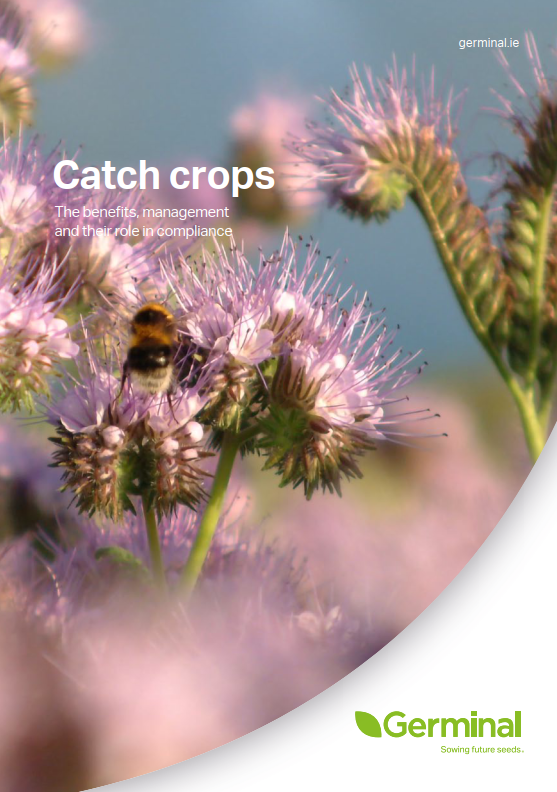Catch crops, also known as cover crops or green manure, have a role to play within regulatory requirements for green cover under the GLAS (Green Low-Carbon Agri-Environment Scheme) rules.
The benefits of catch crops
However, the increased interest is more about farmers’ desire to use them to improve crop productivity and soil structure.
The objective within GLAS is to establish a catch crop that will absorb nutrients and prevent nutrient leaching in the autumn/winter period.
For farmers not within GLAS, when it comes to improving crop productivity, the individual species of catch crops offer many benefits.
These include reduced nutrient loss, reduced disease, pests and weeds, prevention of soil erosion, improved organic matter, improved soil structure, N fixation as well as being a potential forage source.
Sowing advice for cover crops
Catch crops, or cover crops, are planted to reduce nutrient leaching from the soil following the main crop and are commonly sown after the harvest of winter cereals.
Generally, it is advised to sow catch crops as early as possible post-harvest to ensure good early growth is achieved. A later sowing date can impact hugely on production, especially when it gets into August.
Catch crops can be drilled directly into stubble or broadcast onto cultivated ground. Since all mixes contain a mixture of small and big seed, a sowing depth of 1.5 cm to 3 cm is recommended.
Rolling is important to ensure good soil-to-seed contact and helps maintain soil moisture for germination and growth. Farmyard manure/compound fertiliser could be applied prior to cultivation/drilling to provide the growing plants basic nutrients.
This will maximise growth and subsequent biomass for grazing or cover for over-wintered crops. Nutrients applied will be taken up by the growing catch crop and released upon breakdown in the spring to the following cash crop.
Where sown as a greening requirement, minimal fertiliser, if any, is recommended. However, if intending to graze the catch crop, applications of nitrogen and phosphate are essential to increase yield.
Essential tips for catch and cover crops
When sowing catch crops, or cover crops, it is important to remember:
- Sow as early as possible
- Ensure you select from the list of prescribed catch crops
- If you have a brassica in your arable rotation (e.g. oilseed rape), do not use a catch crop mixture containing a brassica
How to choose the ideal catch crop
As already highlighted, regardless of whether or not you are participating in the GLAS or Greening schemes, catch crops offer multiple benefits.
At Germinal, we have designed a range of catch crop mixtures to comply with GLAS and Greening rules, while also bringing the multiple benefits to your soil.
Choosing the most suitable catch or cover crop should be determined by what your objective is for growing the crop. For instance. to condition and enhance the soil or to act as a fodder crop as different species will yield differing benefits.
Either way, catch and cover crops should be sown to complement the farm rotation. For a full list of catch and cover crop options, click here.
To view our catch and cover crops brochure, you can click the image below. You can also speak to one of our grass and forage production experts if want advice.

